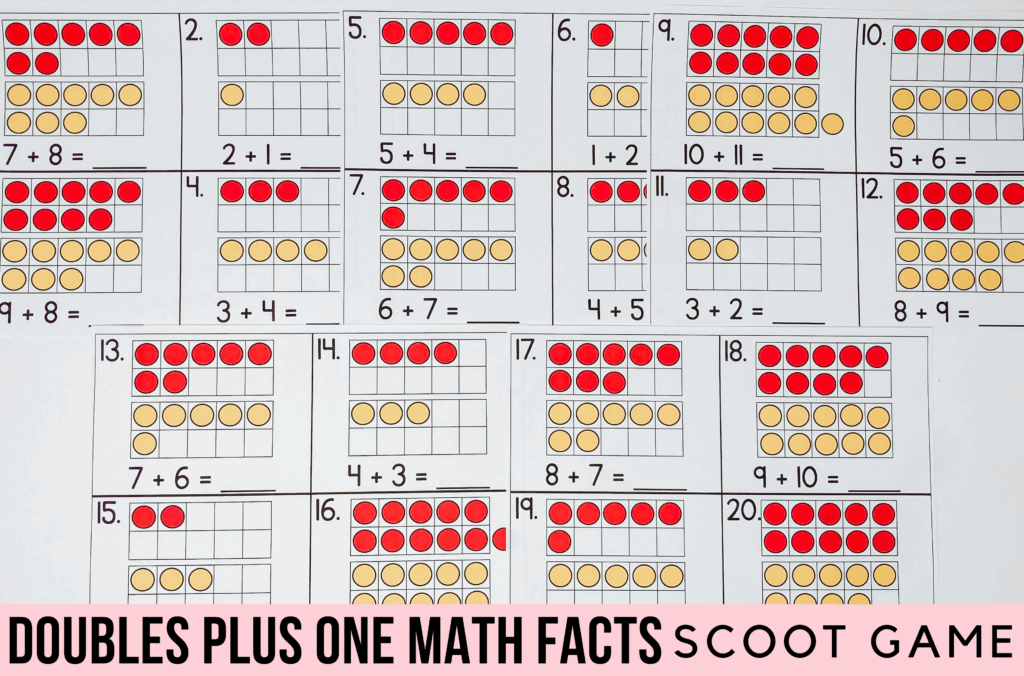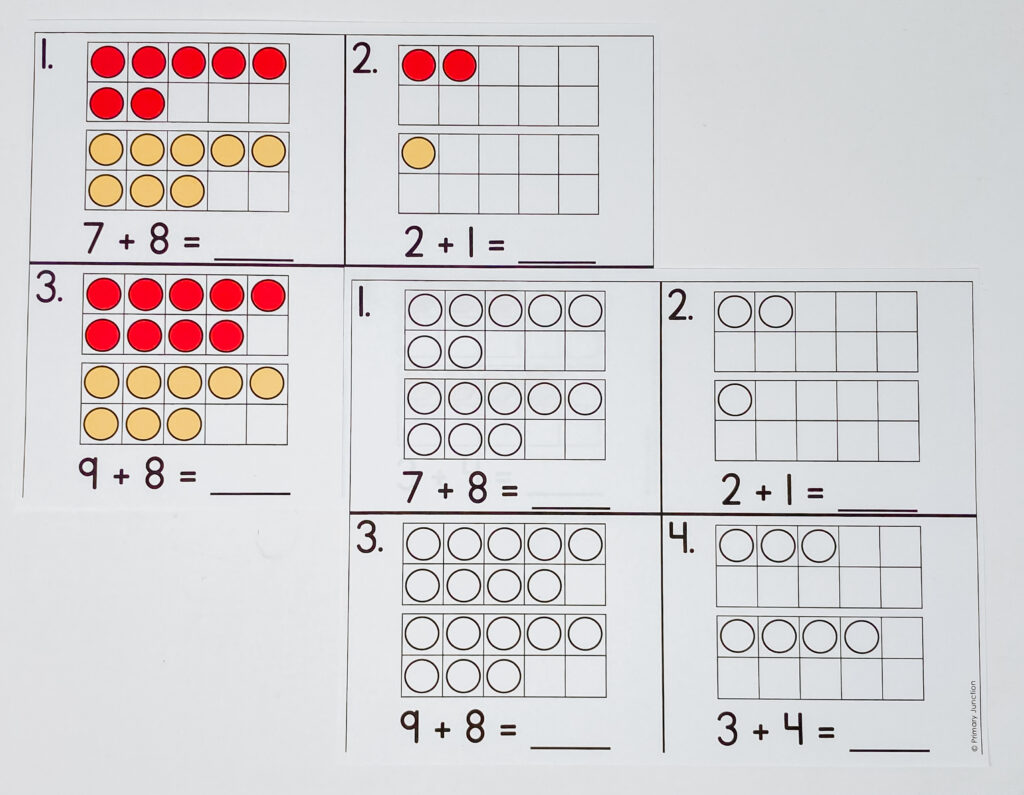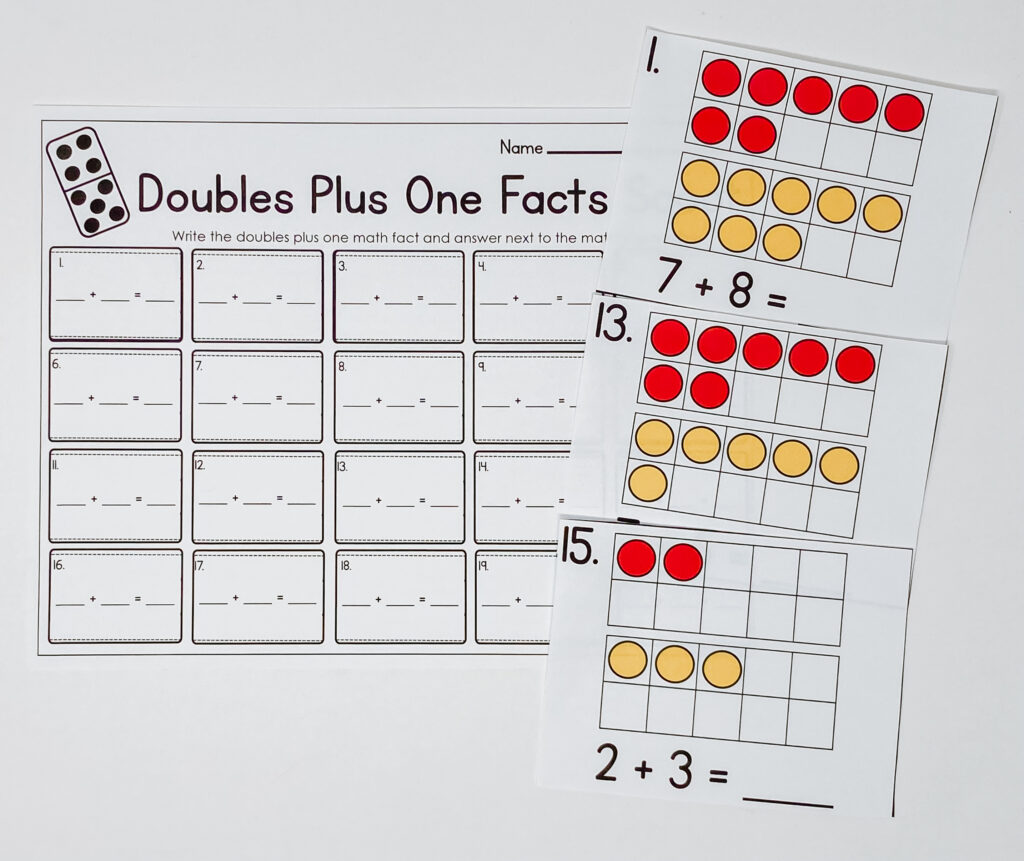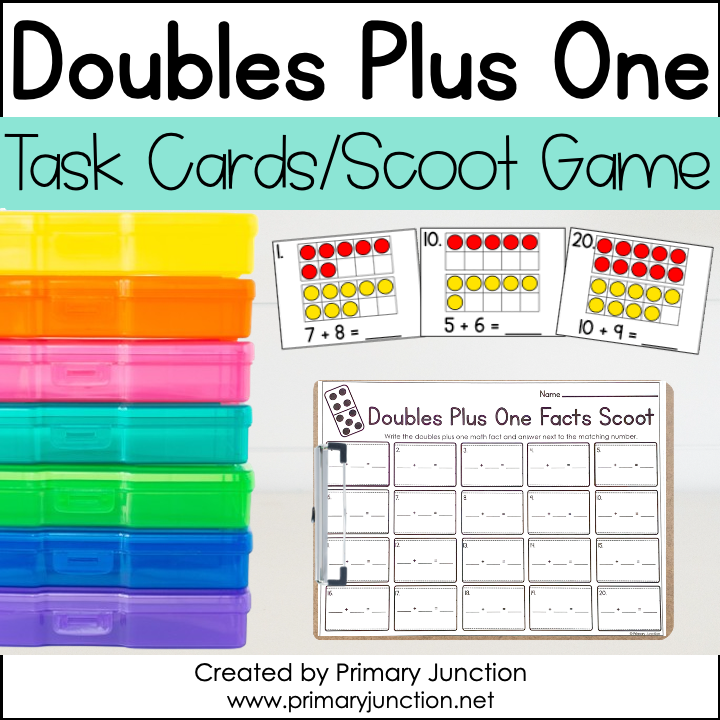Teaching Doubles Plus 1? This Scoot Game Makes It Click!
You know how some math strategies just take a little extra practice to “click” with our first graders? That’s how I’ve always felt about Doubles Plus 1 facts.
They’re such a helpful mental math strategy—once kids get it. But getting there can take some repetition, a little modeling, and let’s be honest…a lot of engagement.
That’s why I started using this Doubles Plus One Scoot Game, and honestly? It made a noticeable difference. The combination of movement, ten frames, and repeated exposure helped my students actually start seeing the relationship between doubles facts and the “plus one” addition facts.
Let me walk you through how I use it and some things I’ve learned along the way!
What Are Doubles Plus One Facts, Again?
Okay, if you’re anything like me, you’ve explained this a dozen times already this year. 😅
Doubles Plus 1 (or Near Doubles or Neighbor Facts) are facts such as:
- 5 + 6 (because 5 + 5 = 10, and one more is 11)
- 6 + 7 (double 6 is 12, plus 1 = 13)
The idea is to use what we know about doubles to solve problems that are just one more. It’s a powerful strategy for building fluency and number sense, but it needs to be seen and used a bunch before it sticks.
Why I Love Using Scoot Games for Doubles Plus One Practice
I love a good worksheet as much as the next teacher (well… maybe love is a strong word), but Scoot Games bring something extra. Kids are moving, talking about math, and thinking quickly—and let’s face it, movement breaks that still feel academic are kind of magical.
Here’s how I use this Doubles Plus One Scoot Game in my classroom:
- I print the cards (in color and laminate or on color paper using black and white ink) and place them around the room or on desks.
- Students grab a recording sheet and move through the cards one at a time.
- Each card uses ten frames to help them visually model the doubles fact and then build to “plus one.”
- Some days we play it as a formal Scoot game with signals. Other days, it’s a Write the Room activity during centers.
- It also works great in small group for reteaching!
What’s Included in the Doubles Plus One Scoot Game Set:
I keep this set in my math toolbox because it’s so flexible. It comes with:
- 🎯 Task/Scoot Cards – both color and black-and-white
- 📝 Recording sheet – super simple for students to follow
- ✅ Answer key – for quick checks or peer grading
- 📋 Clear teacher instructions
My Favorite Ways to Use This Set
Whole Group Scoot Game:
This is my go-to on a Thursday or Friday or when the wiggles are real. I pass out cards and we rotate cards every minute. It’s silent, focused, and high-energy all at the same time. I use a bell or just shout “SCOOT!”
Write the Room Math Center:
Perfect for early finishers or your math station rotations. Tape the cards around the room and let students move at their own pace.
Small Group Intervention:
These task cards are amazing for pulling a small group that needs extra help with Doubles Plus One Math Facts. We work through the ten frames together and talk through how to spot the “plus one.”
A Few Quick Tips:
- Model the Strategy First: Don’t assume they’ll transfer their doubles knowledge to plus one facts on their own. I like to do a few problems together on the board before sending them off.
- Let Students Explain Their Thinking: One of the best parts about using Scoot Games is that you can pause between rounds and ask, “How did you solve that one?” It helps solidify the strategy when they teach it to a friend.
- Partners: You can always partner up students for the scoot game, as well. If you have more than 20 students, have some partner up. If you have a few students who need support to answer the problems, you can partner them up for the Doubles Plus One Scoot Game, as well!
Final Thoughts from One Teacher to Another
Teaching Doubles Plus 1 doesn’t have to be dry or repetitive. This Doubles Plus One Scoot Game has honestly helped my students build confidence and fluency with these tricky facts in a low-stress, high-engagement way.
Whether you’re doing a full class Scoot Game, setting up a Write the Room activity, or pulling a small group, this resource meets you where you are.
And more importantly—it meets your students where they are.
If you’d like to grab a copy to use with your class, you can get it here. I hope you and your class have as much fun with this game as my class and I do! Happy Learning!




